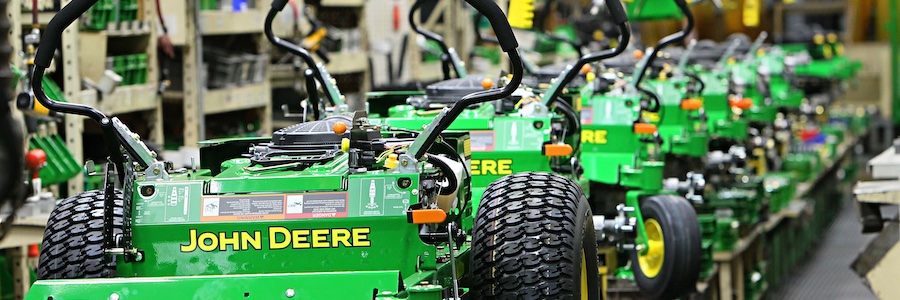John Deere has had a turbulent news cycle these last few months. It has endured scrutiny on both the social front as well as the financial front as it tries to get through this year.
On the social front, it has witnessed increase negative attention with its social media outreach campaigns to attract a new generation of customers, as well as scrutiny and walk backs on its own previously implemented DEI hiring programs.
This last month, however, it has attracted even more attention as it issued another round of layoffs, totaling in the thousands at this point over the last few weeks. This may come as little surprise to some farmers though, as they could see the writing on the wall, so to speak. Commodity prices in major sectors are down, food costs and inflation at still high, and overall prices in the market are making it harder for farmers to make money.
What seems to upset people the most, is that John Deere has continued to move more jobs for its tractor and farming gear manufacturing to Mexico, in the wake of additional layoffs in the US. This is nothing new exactly, as John Deere has been doing this for decades now, since the 1950s. Still, it is slightly infuriating to those who were just let go in the US with what they consider similar job functions to the ones pushed into Mexico at near the same time as the US layoffs. One worker was quoted by the Daily Mail as saying, “We get wind of more layoffs daily, it seems, and it’s causing uncertainty all over. The only reason for Deere to do this is greed.” The man stayed anonymous for fear of retaliation.
In a recent interview with Farm Journal, Cory Reed, President of President of John Deere’s Worldwide Ag & Turf Division, stated, “When we move a product, we make the announcement and say, ‘This portion of this product is going to move here.’ And by the way, we’re doing that all the time. It’s a part of what we do in our global network.” He went on to say that in one of the areas they had layoffs, they are planning to build the new 9RX 830-hp four-wheel drive tractor there. Although it was not entirely clear how this alone explains away the thousands of layoffs issued recently in a company the hires more than 80,000, nor if that meant these people could expect to get their jobs back at some point in the near future.
Still, with farmers making less money, with less income, the new equipment market is in heavy enough decline for John Deere to have to make some serious cutbacks. As one economist has been cited saying from Iowa State, income is expected to fall nearly 25% this year in key Ag sectors. Staple commodities, such as corn, beans, and barely from the Midwest areas alone have already experienced significant drops and have been for the last 10 months in some cases, with many people expecting further declines into 2025.
John Deere itself has also cited continued equipment sales decline over the last two years as another reason, and Cory Reed says they expect another 20% decline in equipment sales by the end of 2024. He also factored in lower net farm income, higher interest rates, and general market volatility as being considered prior to the layoffs.
This economic storm seems to have made it nearly necessary that these recent layoffs happened and may continue in the immediate future. And other dealers in the industry may soon follow if they haven’t yet already, albeit more quietly than John Deere has been able to do.

This is much more significant in areas in the Midwest as well, where these jobs were some of the most well paid in their respective communities, which may further harm the already struggling areas and families as they too try to navigate a generally rough economy.
The majority of these most recent waves of layoffs were across several Iowa sites – Ankeny, Dubuque, Ottumwa, Urbandale, Waterloo; plus Davenport and East Moline in Illinois as well as a research center in Urbandale. And again, these jobs were generally salaried and benefitted positions, especially in production.
Time will tell how much worse this may be however, but likely not until near the end of the year around harvest season. If farmers can’t find or fix equipment though easily, that will likely make the matter worse going into 2025.
In the same interview, Reed was also pressed about rising equipment costs as well, and asked if John Deere planned to do anything to help farmers. He stated, “We’re taking some of our latest technologies, and we’re cutting the upfront price of it. If you take See & Spray, which is a great example, that product would normally cost hundreds of thousands of dollars to add to a machine. We lowered the upfront price for a retrofit kit to be able to put it on for tens of thousands of dollars. A customer who wants to manage their herbicide cost differently has the opportunity to buy into that, on an acre-by-acre basis, and only pay based on what they save.”
However, this statement from Reed may also not inspire much confidence in John Deere from farmers either.
The economy does ebb and flow of course, and Agriculture is no stranger to this. Some farmers are more optimistic, understanding that it will take some time for the economy to correct. Even if that means another year of turbulence. Although, it doesn’t seem that these jobs will be coming back anytime soon, nor that John Deere will stop sending production jobs to Mexico, especially as John Deere plans to continue its heavy investment in automation.







